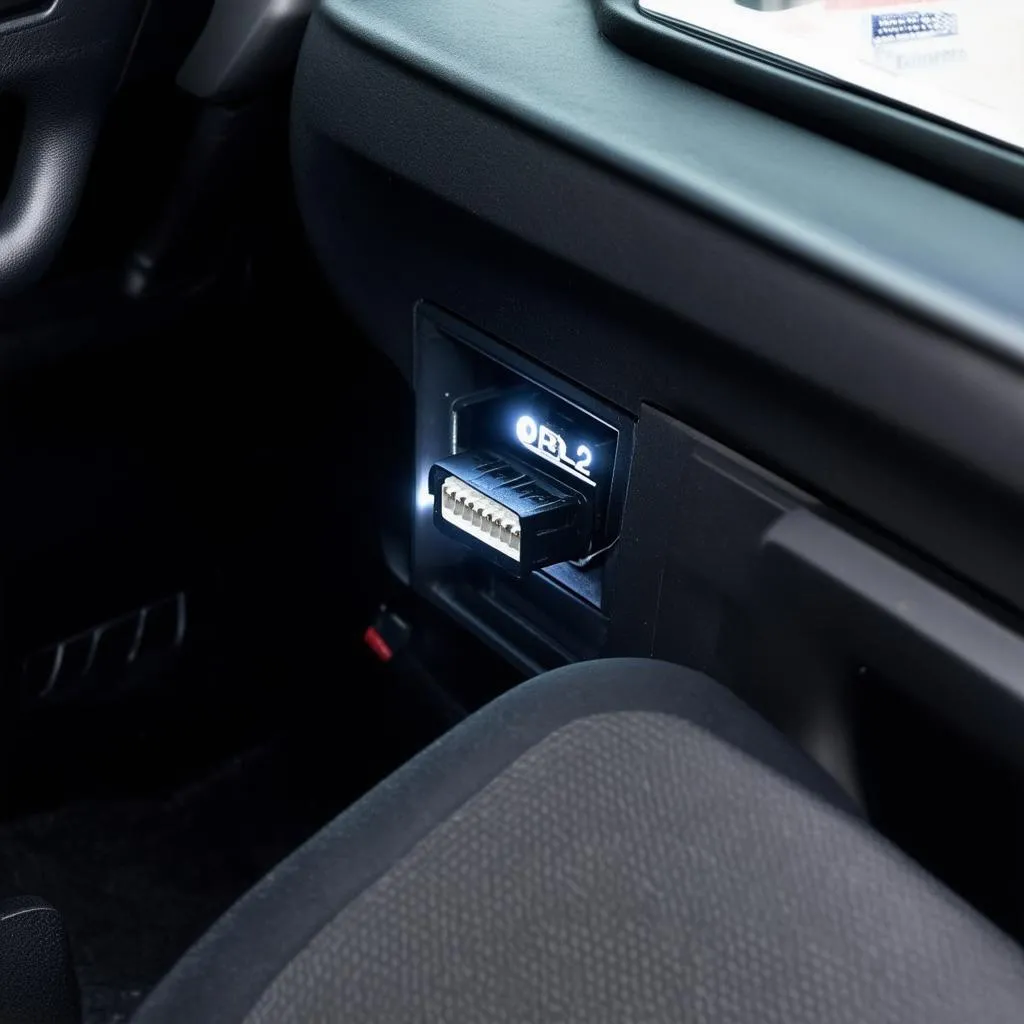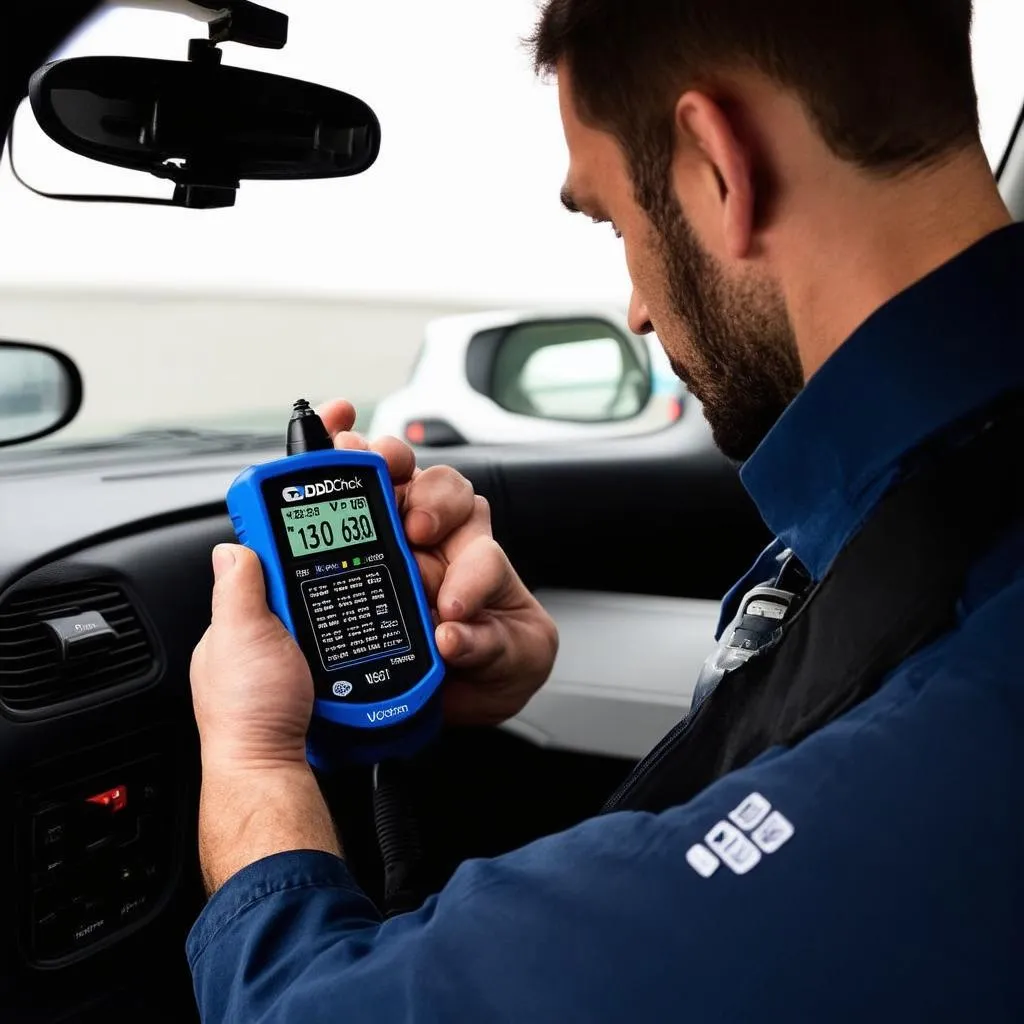“A stitch in time saves nine,” as the old adage goes. This rings especially true for car maintenance. Ignoring a strange noise or a flickering dashboard light can lead to costly repairs down the road. Thankfully, gone are the days when understanding your car’s health was a mystery only mechanics could solve. With the advent of OBD2 scanners like the OBDCheck VP30, taking charge of your car’s well-being is easier than ever. This guide will delve deep into the OBDCheck VP30, exploring its functionalities, benefits, and addressing common user queries.
Decoding the OBDCheck VP30: What Makes it Tick?
Have you ever felt a pang of uncertainty when your check engine light flashes on? It’s like your car is speaking a language you don’t understand. The OBDCheck VP30 acts as your translator, turning cryptic error codes into understandable diagnoses. Imagine this: your car starts sputtering, and the check engine light illuminates. Instead of rushing to a mechanic, you calmly connect the OBDCheck VP30 to your car’s OBD2 port. Within seconds, the device reveals the issue – a faulty oxygen sensor. This knowledge empowers you, the car owner, to make informed decisions about repairs, saving you potentially hefty mechanic bills and unnecessary stress.
What is the OBDCheck VP30?
The OBDCheck VP30 is a diagnostic tool specifically designed for European car models. This compact device plugs into your car’s OBD2 port, usually located under the dashboard on the driver’s side.
Why Choose the OBDCheck VP30?
Beyond simply reading and clearing error codes, the OBDCheck VP30 offers a range of functionalities:
- Real-time data monitoring: Keep an eye on your car’s vital signs like engine RPM, coolant temperature, and oxygen sensor readings. This real-time data can be invaluable in identifying potential issues before they escalate.
- Component activation: The VP30 allows you to test individual components like fuel injectors or ABS solenoids, confirming their functionality without needing a mechanic.
- Resetting service lights: After performing basic maintenance yourself, like an oil change, you can easily reset the service light reminder using the VP30.
Addressing the How-Tos: Using the OBDCheck VP30
- Locate your car’s OBD2 port. This standardized port is typically found under the dashboard on the driver’s side.
- Connect the OBDCheck VP30. The device is powered directly by the OBD2 port, so there’s no need for additional batteries or power sources.
- Turn your car’s ignition ON. This powers up the OBD system and allows the VP30 to establish communication.
- Navigate the OBDCheck VP30’s menu. The device features a user-friendly interface that guides you through selecting the desired function, whether it’s reading codes, monitoring data, or activating components.
 Car OBD2 Port Location
Car OBD2 Port Location
Delving Deeper: Common OBDCheck VP30 Queries Answered
- Q: Is the OBDCheck VP30 compatible with my car?
- A: The VP30 is designed for European car models. However, it’s crucial to check the manufacturer’s compatibility list to ensure it supports your specific make and model year.
- Q: Can the OBDCheck VP30 fix my car’s problems?
- A: The OBDCheck VP30 is a diagnostic tool, not a repair tool. It identifies issues but doesn’t fix them. Think of it as a doctor making a diagnosis; you still need the treatment to address the problem.
- Q: I see a code about an oxygen sensor. What should I do?
- A: Oxygen sensors play a critical role in fuel efficiency and emissions control. A faulty sensor can lead to decreased fuel economy and increased emissions. It’s best to consult a mechanic or do further research on the specific code to understand the extent of the issue and explore repair options.
 Mechanic Using OBDCheck VP30
Mechanic Using OBDCheck VP30
The Bigger Picture: OBDCheck VP30 and Your Car’s Wellbeing
Beyond its technical capabilities, the OBDCheck VP30 can be seen as a tool for fostering a deeper connection between you and your car. In many cultures, cars are seen as more than just machines; they are extensions of our personalities, symbols of freedom, and companions on life’s journeys. Regularly using the VP30 allows you to proactively address your car’s needs, ensuring it runs smoothly and reliably for years to come. This, in turn, can bring peace of mind, knowing you are caring for your car just as it cares for you by safely transporting you wherever you need to go.
Looking for more in-depth car care information?
Check out these articles for further reading:
Need Help with Your OBDCheck VP30 or Other Diagnostic Tools?
We’re here to assist! Our team of automotive experts is available 24/7 to provide support and guidance. Contact us via WhatsApp at +84767531508 for prompt assistance with installation, troubleshooting, or any other car diagnostic-related questions.
In conclusion, the OBDCheck VP30 is an invaluable tool for any European car owner looking to take control of their vehicle’s maintenance. It empowers you with knowledge, saves you money, and strengthens the bond between you and your car. By understanding how to use it effectively, you can ensure your vehicle remains in top condition, providing you with countless miles of safe and enjoyable driving experiences.